AI transformation in fashion explained through 4 real brand case studies. See specific problems solved, measurable results in weeks. No buzzwords, just ROI.
by YesPlz.AIOctober 2025
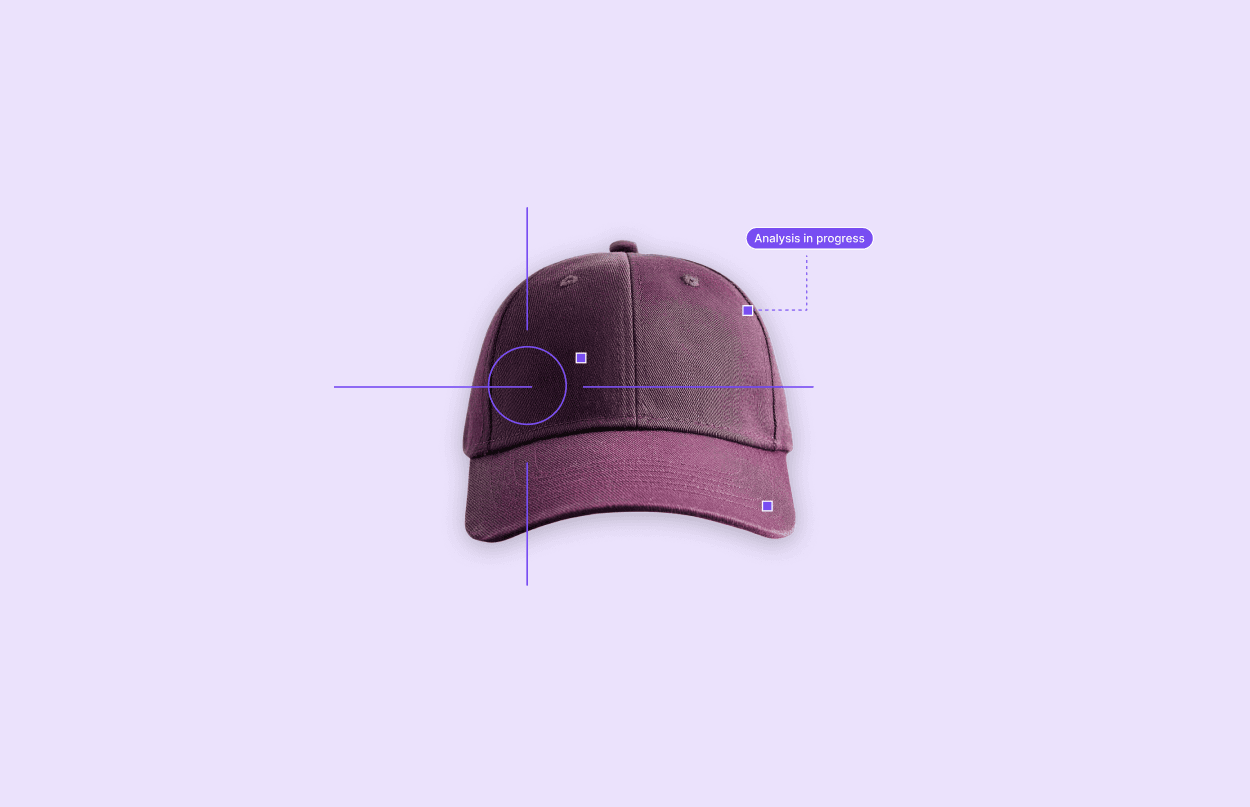
You see headlines: “Major fashion brands are hiring Chief AI Officers." You hear buzzwords: "AI transformation in fashion," "AI innovation," "AI-powered retail." But when someone asks what AI actually does for your business, the answers get vague. If this sounds familiar, you’re not alone. And, this article is definitely for you.
We won't discuss AI potentials or future possibilities. Instead, we walk you through exactly how AI solves real problems through four case studies with actual brands. No theory. No buzzwords. Just what AI did, what these brands invested in, and what they got back in measurable results.
Table of Contents:
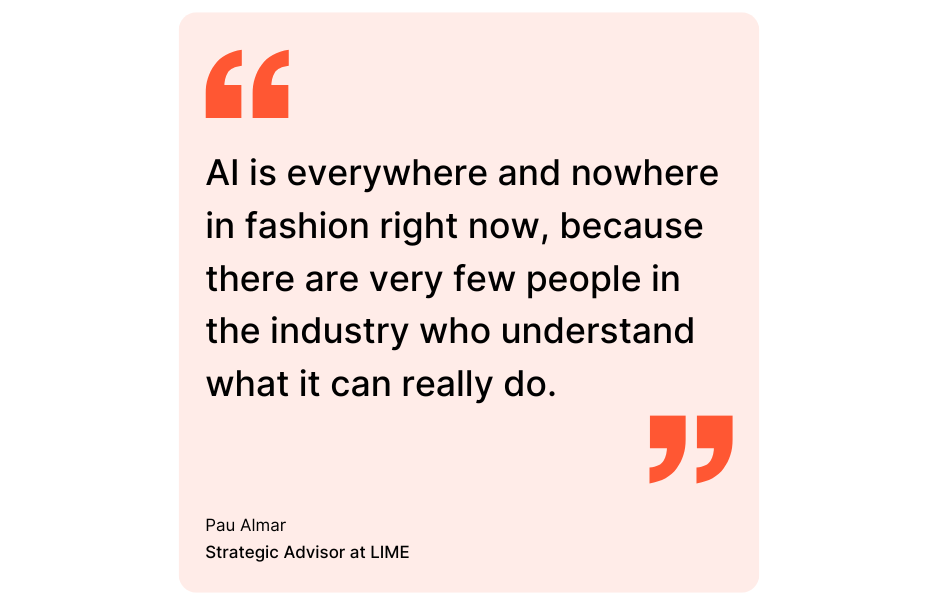 "AI is everywhere and nowhere in fashion right now, because there are very few people in the industry who understand what it can really do," says Pau Almar, a consultant who advises fashion brands on digital transformation. And we, at YesPlz, totally agree.
"AI is everywhere and nowhere in fashion right now, because there are very few people in the industry who understand what it can really do," says Pau Almar, a consultant who advises fashion brands on digital transformation. And we, at YesPlz, totally agree.
The confusion starts at the top. Fashion brands hire and call the person in charge of AI differently:
Lulumenon: Chief AI and Technology Officer - September 2025
Ralph Lauren: Chief Digital Officer (with a focus on AI) - May 2025
Estee Lauder Companies (ELC): Chief Technology, Data, and Analytics Officer (with a focus on AI) - April 2024
Louis Vuitton-Moët-Hennessy (LVMH): Chief Data and AI Transformation Officer - Mar 2024
Nike: Head of AI role - 2020
The variations in job titles reflect how nascent the role is in fashion. According to industry recruiters, fashion brands are still working out fundamental questions:
What responsibilities should entail?
What AI could mean for their business?
How to embrace this emerging technology without losing creative IP (Intellectual Property)?
This AI knowledge gap creates a problem for fashion eCommerce managers. They’re not sure where to place resources or which AI tools they should choose. More critically, they’re not confident in whether their new hires will have a meaningful impact on the business through effective fashion industry AI integration.
The confusion about AI transformation in fashion exists because most discussions stay theoretical. Instead of vague promises, let’s examine what AI actually does in this section. The AI transformation strategies for fashion businesses fall into four practical categories. Each addresses specific pain points that fashion retailers face daily. These aren’t experimental technologies. They’re proven solutions already delivering results for fashion brands of all sizes.
Product Tagging: One of the most time-consuming tasks in fashion eCommerce is properly categorizing and tagging products. AI can help you do that by analyzing product images. It then assigns accurate tags for fashion-specific attributes like color, pattern, material, style, and occasion. In this way, AI automatically eliminates hours of manual data entry. It also ensures consistency across thousands of products in your catalog.
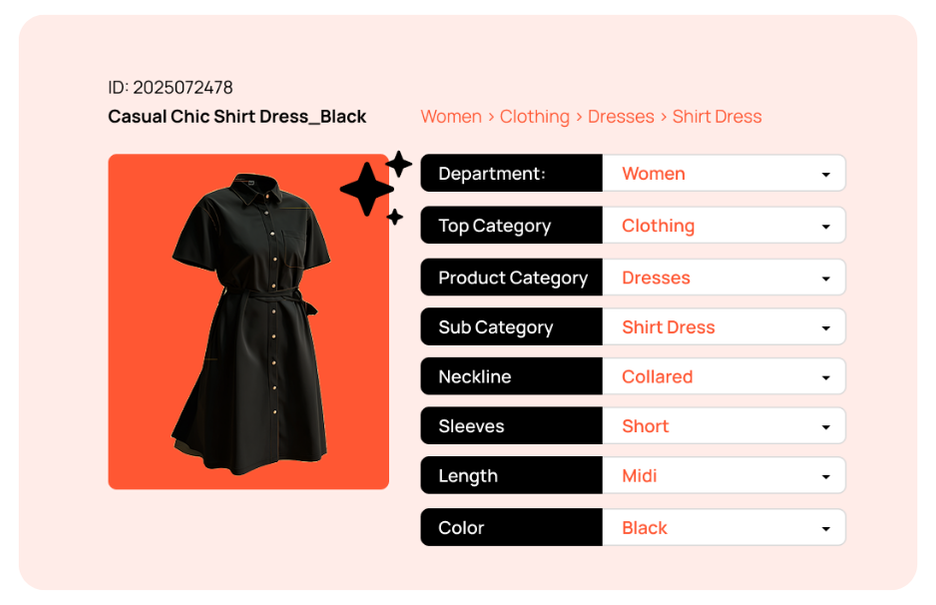
Inventory Management: AI goes beyond simple stock counting. It analyzes historical sales data, seasonal patterns, current trends, and even external factors to predict future demand. As a result, fashion retailers can optimize stock levels, reduce costly overstock situations, minimize lost sales from stockouts, and make more informed buying decisions.
AI Stylists: An AI stylist understands individual shopper preferences, body types, and style personalities. It suggests complete outfits, explains why certain pieces work together, and adapts recommendations based on the occasion or season. It’s like giving every customer access to a personal stylist.

Recommendation Engines: AI analyzes vast amounts of data, including browsing behavior, purchase history, patterns from similar shoppers, seasonal and trending items, to recommend products each shopper is most likely to buy. Especially, AI is continuously learning and improving. So, it is becoming more accurate over time and driving higher conversion rates.
Effortless SEO-Optimized Meta Titles and Meta Descriptions: Every product page needs SEO-optimized content. But writing unique, compelling descriptions for thousands of them is resource-intensive. AI can generate meta titles, product descriptions, and alt text at scale. It maintains your brand voice while incorporating relevant keywords for search visibility. Online fashion retailers can enjoy properly optimized content without requiring a large content team.

Automated Language and Currency Switcher: Expanding into new markets traditionally requires extensive manual work. Let’s say, translate thousands of product descriptions, localize content for cultural nuances, and manage multiple currency displays. AI streamlines this process by automatically detecting shopper location and preferences. It translates product descriptions and converts prices to local currency with real-time exchange rates.
Hybrid Search: Traditional keyword search often fails when shoppers don’t know the exact terms to use. AI-powered hybrid search combines keyword matching with visual recognition and semantic understanding. Shoppers can find what they want with vague queries like “flowy dress for beach vacation.”
Fashion-Specific Filters: AI trained on fashion terminology enables more intuitive product discovery. It understands the nuances of fashion language that traditional filtering systems miss. Instead of generic filters, shoppers can browse by specific aesthetics, occasions, or trend categories.
You might be thinking: “This sounds promising, but will it work for my business?” The best way to answer it is through real examples. The following case studies represent different retail challenges - from small catalogs needing maximum efficiency to massive inventories requiring globalization. Each brand faced a distinct problem, implemented AI-targeted solutions, and achieved measurable results. Most importantly, these aren’t cherry-picked success stories from tech giants. They’re real-world implementations from fashion retailers of varying sizes, demonstrating the role of AI in fashion business growth.
Hang Ten Korea operated with under 1,000 SKUs. Their compact catalog presented a unique challenge: Every single product interaction mattered. They couldn’t afford to miss opportunities or receive irrelevant recommendations. Their eCommerce platform, Cafe24, equivalent to Shopify, delivered limited cross-sells and upsells, at least not for fashion. Shoppers would view a product and leave. A search query for “shorts” returned zero results despite having shorts in inventory. For a smaller catalog where each SKU needed to work harder, these missed connections were costing Hang Ten valuable revenue.
Hang Ten implemented YesPlz AI’s recommendation system optimized for smaller catalogs. The system analyzed every product relationship and shopper behavior patterns to maximize cross-selling opportunities. Each product detail page suggested three-layer recommendations, including "You Might also Like," "Frequently Bought Together," and "Complete the Look." Meanwhile, the shopping cart featured strategic upsell suggestions. The hybrid search system ensured that every product could be discovered in multiple ways, maximizing the potential of their focused inventory.
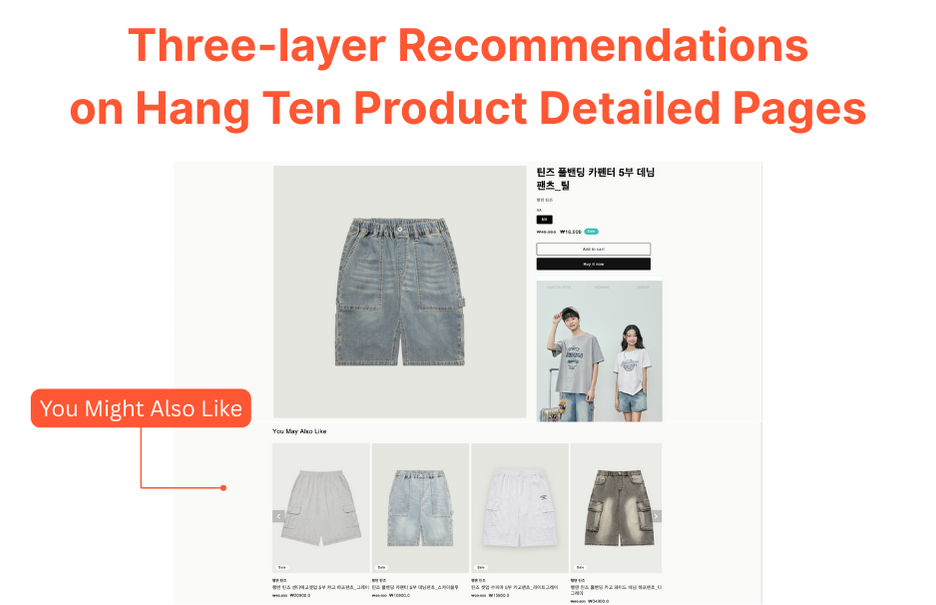
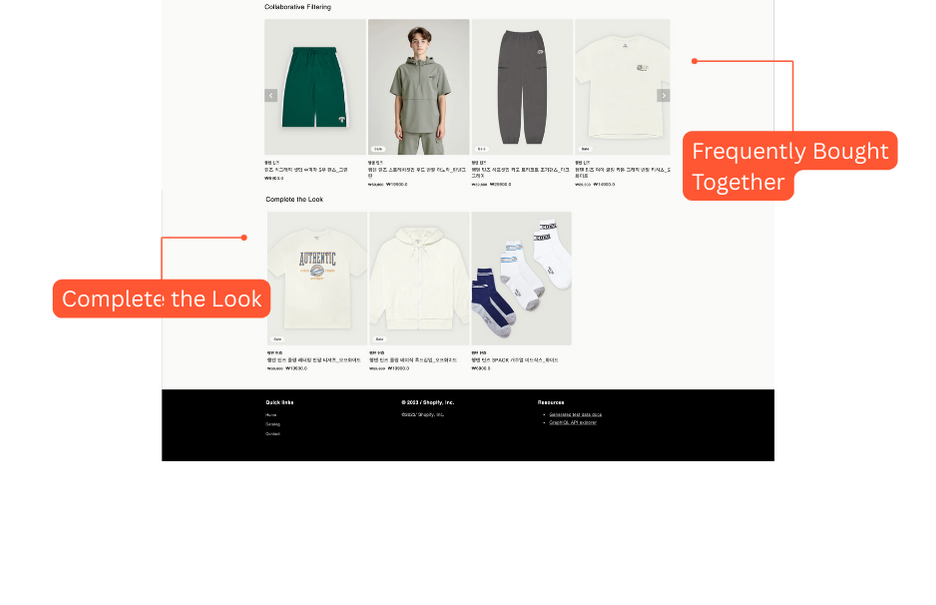 The Results
The ResultsThe impact was immediate and measurable. Add-to-cart rates jumped from zero to 16%. This dramatic transformation ensured that every interaction counts in a smaller catalog environment. Search queries that previously returned nothing now deliver 127 relevant results. The AI recommendations maximized the potential of each SKU. AI turned a limitation into a strength by creating deeper, more meaningful product relationships. This case demonstrates how AI transformation in fashion retail can deliver a significant impact regardless of catalog size.
AI-powered search creates a compounding effect. Better discovery leads to better engagement, which leads to better SEO, which brings more traffic and ultimately more sales.
Looxloo is a premium children’s and baby fashion retailer with 50 curated brands. Their shoppers, the discerning parents, knew exactly what they wanted but struggled to find it. These parents didn’t have time for complex searches or irrelevant results. They needed their shopping experience to be simple and precise. The existing system delivered 82% search accuracy. This means one in four searches led to frustration. Parents searching for “pink dress” would see earrings and baby rompers instead of the actual pink dresses. The lack of intuitive search and discovery tools was creating frictions that should be a straightforward shopping experience for busy parents.
Looxloo implemented YesPlz AI’s hybrid search that combined intelligent features to guide parents effortlessly. For example, the Recent Search feature allowed returning parents to revisit their previous queries. It helped save time across multiple shopping sessions. Recommended Search Terms suggested relevant alternatives based on browsing behaviors and popular trends. Meanwhile, Popular Search highlighted trending queries. It showed parents what others were discovering and building confidence through social proof.
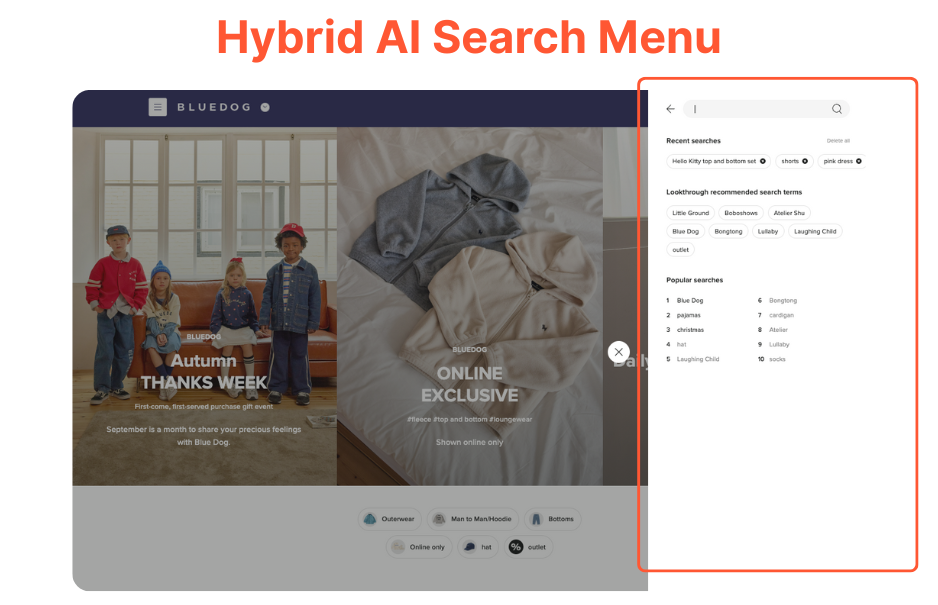 The Results
The ResultsSearch accuracy jumped dramatically to 95%. This improvement transformed the parent shopping experience. The search for “pink dress” that previously returned irrelevant items now shows perfectly matching products. The AI transformation in fashion technology was completed in just 2-3 weeks. Looxloo enjoyed comprehensive change without disrupting operations. Most importantly, busy parents got what they needed with simple search queries.
A complete AI transformation in fashion doesn't replace humans. It amplifies what humans can accomplish. Creative teams focus on brand strategy. Meanwhile, AI handles the operation-heavy lifting.
W Concept faced the daunting challenge of taking its massive catalog of 400K+ SKUs global. Recently, the brand launched an AI-powered fashion discovery suite to better serve Japanese shoppers. This market is known for sophisticated fashion tastes and high expectations. Traditional expansion approaches would have been overwhelming:
Manually localizing 400K+ products
Creating relevant filters for diverse styles
Building personalized experiences for a new market with different cultural preferences
The scale alone made conventional methods impractical. Meanwhile, Japanese shoppers expected intuitive discovery tools that understood subtle style preferences and cultural nuances. This is where AI transformation in fashion eCommerce proved invaluable.
W Concept implemented YesPlz AI’s comprehensive suite designed for large-scale international expansion. The Virtual Mannequin allowed Japanese shoppers to browse visually by clicking on different parts of a virtual model. For instance, selecting “cropped” length or “open” neckline, shoppers could instantly see relevant items from the massive catalog. It thus enabled shoppers to find products by vibe, occasion, pattern, or any tiny design detail. AI-powered recommendations provided a smarter onboarding for new Japanese shoppers. These suggestions helped them discover relevant items from the vast inventory without feeling overwhelmed.
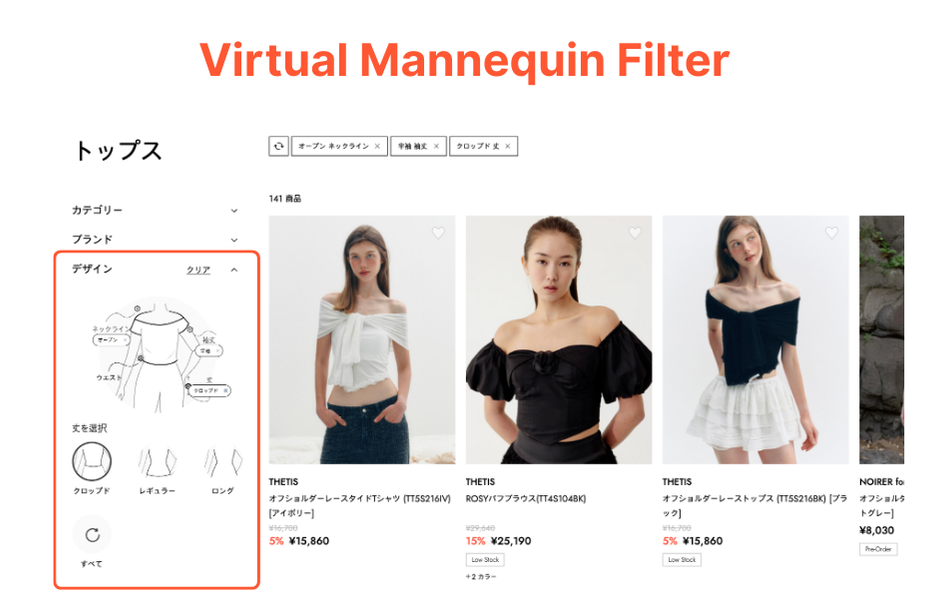 The Results
The ResultsW Concept Japan successfully launched with a fully localized, AI-powered experience. Their massive catalog of 400K+ SKUs is now manageable and personalized. Japanese shoppers could navigate the enormous inventory effortlessly. The visual discovery tools removed language barriers. International expansions that would traditionally take months of manual localization were completed in weeks through strategic fashion innovation with AI.
AI enables international expansion at a speed and cultural depth that would be impossible with traditional localization approaches. This successful AI transformation in fashion proves that scale is no longer a barrier to global growth.
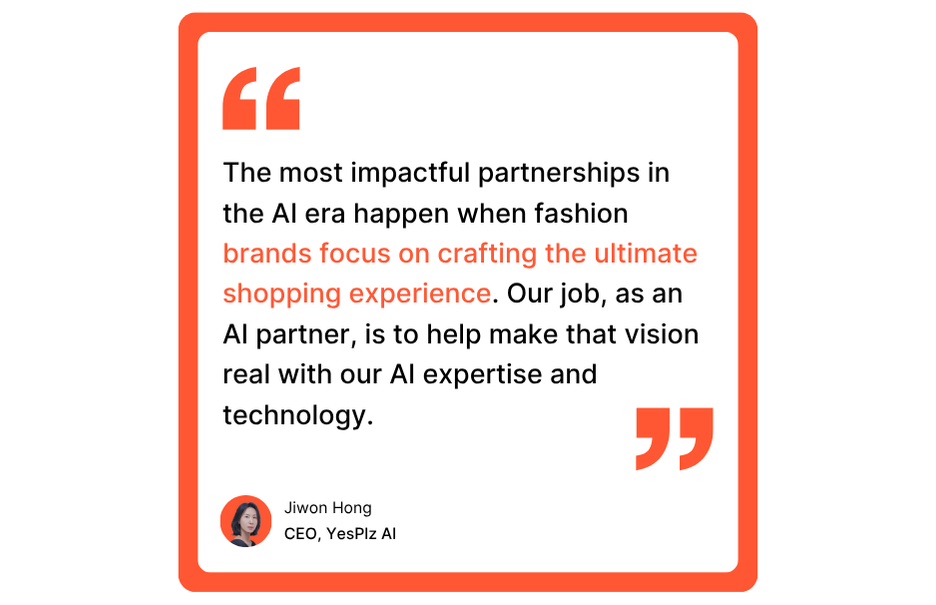 Case Study 4: Zilo - Beyond Generic Tags to Local Flavour
Case Study 4: Zilo - Beyond Generic Tags to Local FlavourZilo, a fast-growing Indian fashion brand, faced a unique challenge. Keeping up with local fashion preferences was essential for their rapidly expanding catalog. In Indian fashion, there are diverse ethnic wear such as sarees, kurtas, lehengas, and fusion styles that blend traditional and contemporary elements. General search engines failed to understand these cultural nuances.
Zilo implemented YesPlz AI’s fashion-specific system with custom training on Indian fashion categories and cultural contexts. The AI stylist was specifically trained to understand local fashion terminology, cultural occasions, and style preferences unique to Indian shoppers. It could distinguish between different types of ethnic wear, understand occasion-appropriate styling, and recognize regional style variations. This culturally-aware approach to AI transformation in fashion made all the difference.
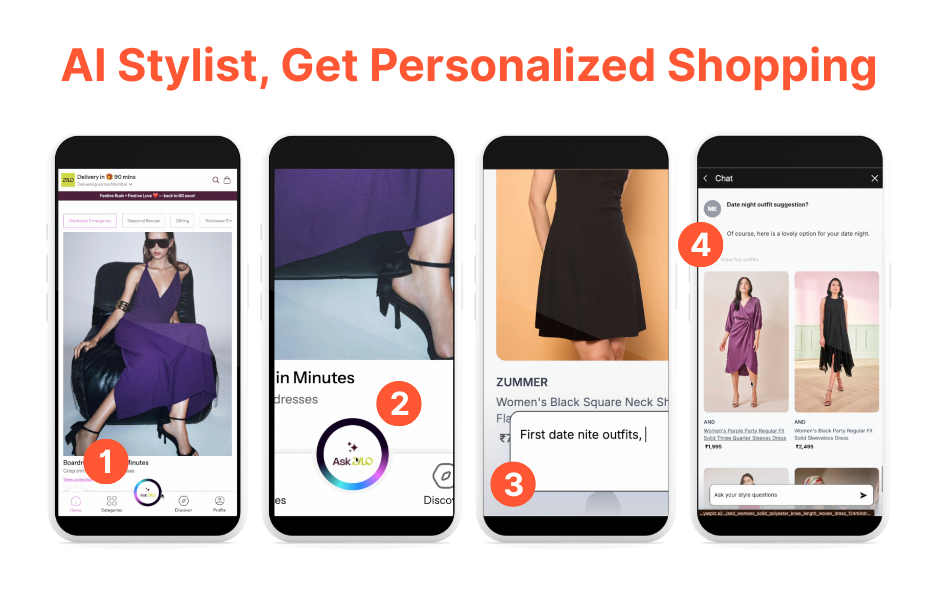 The Results
The ResultsThe AI stylist could handle complex Indian fashion queries. It led to faster, more relevant products that respected local fashion sensibilities. The result was:
Higher engagement as shoppers felt understood by the stylist
Better conversion rates because the suggestions matched shoppers' actual style needs
Stronger customer loyalty because the experience was tailored to their cultural context
Strategic, focused AI implementation solves immediate problems while creating long-term competitive advantages through better data and insights.
AI transformation in fashion isn't about replacing creativity or jumping on technology trends. It's about solving specific business problems that have been draining resources and limiting growth for too long. The four fashion brands in this article succeeded because they followed a practical approach:
Identified specific problems (not vague goals like "be more innovative")
Found suitable AI solutions (tools matched to their actual needs)
Implemented and measured results (with clear metrics and timelines)
Scaled what worked (building on proven successes)
The question is no longer whether AI transformation in fashion can benefit your eCommerce business. It should be: What problem will you solve first?
Want to see what’s possible for your brand? Share your biggest eCommerce challenge with us. We’ll show exactly how AI can address it, what results to expect, and how quickly you can implement it.

Written by YesPlz.AI
We build the next gen visual search & recommendation for online fashion retailers
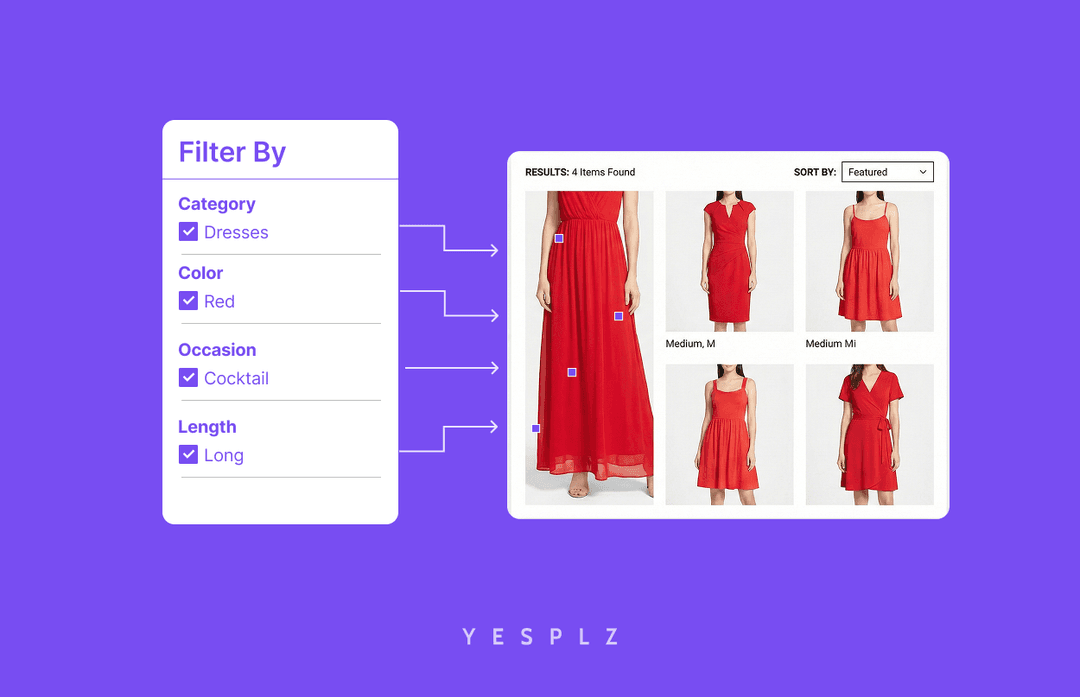
Stop losing sales to poor product filtering. Discover how AI simplifies creating Shopify filters, saving you 25-50 hours per 100 products.
by YesPlz.AI
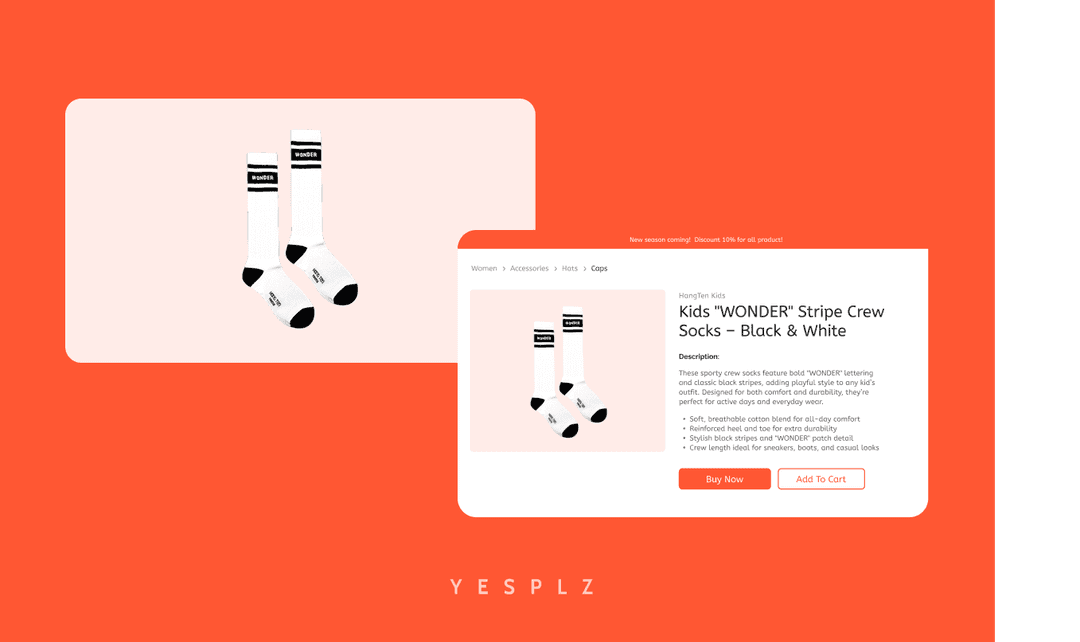
Automate Shopify product pages and cut 50–100 hours of manual work. AI generates product titles, descriptions, and metadata instantly from product images.
by YesPlz.AI